Invited by August Black to the Conduction Camp I was in USA from 28 of May to the 14th of June. The trip touched no major city, if we exclude downtown Baltimore on the last day. It was a grand tour of rural east USA, with a core stay of a week in Upstate New York, in the vicinity of some small towns close enough to Hudson and the river with the same name and a town named Cairo, similarly close.
Is a group of radio artists and enthusiasts, on a mission. They are focused on reaching a form for their next adventurous exploration of sound remote collaboration via a software named "Mezcal" that allows them to collaborate in a radio flow from wherever they are through a web browser. The difference with other softwares for remote conversation is the very low latency, that makes the conversation flawless and sonic improvisation a charm. This group had collaborated for 2 years in a program hosted by a local radio Wave Farm’s WGXC 90.7-FM once a month. For the majority of them was the first encounter in vivo.
What was I there for?
Well I have been between the beta testers of mezcal, and we tried on the radio. August Black, the coder and initiator, is not only a good friend, our friendship dates back to 15 years, but as well a participant to two trasformatorio labs. He asked me to go, having resources to pay my travel and i said yes without hesitation. I have been shooting a documentary about the meeting, about the ideas of radio, of community, of sound art, that these people share. I as well did a bit of radio, a lot of talking, some cooking.
Thank you August for inviting me.
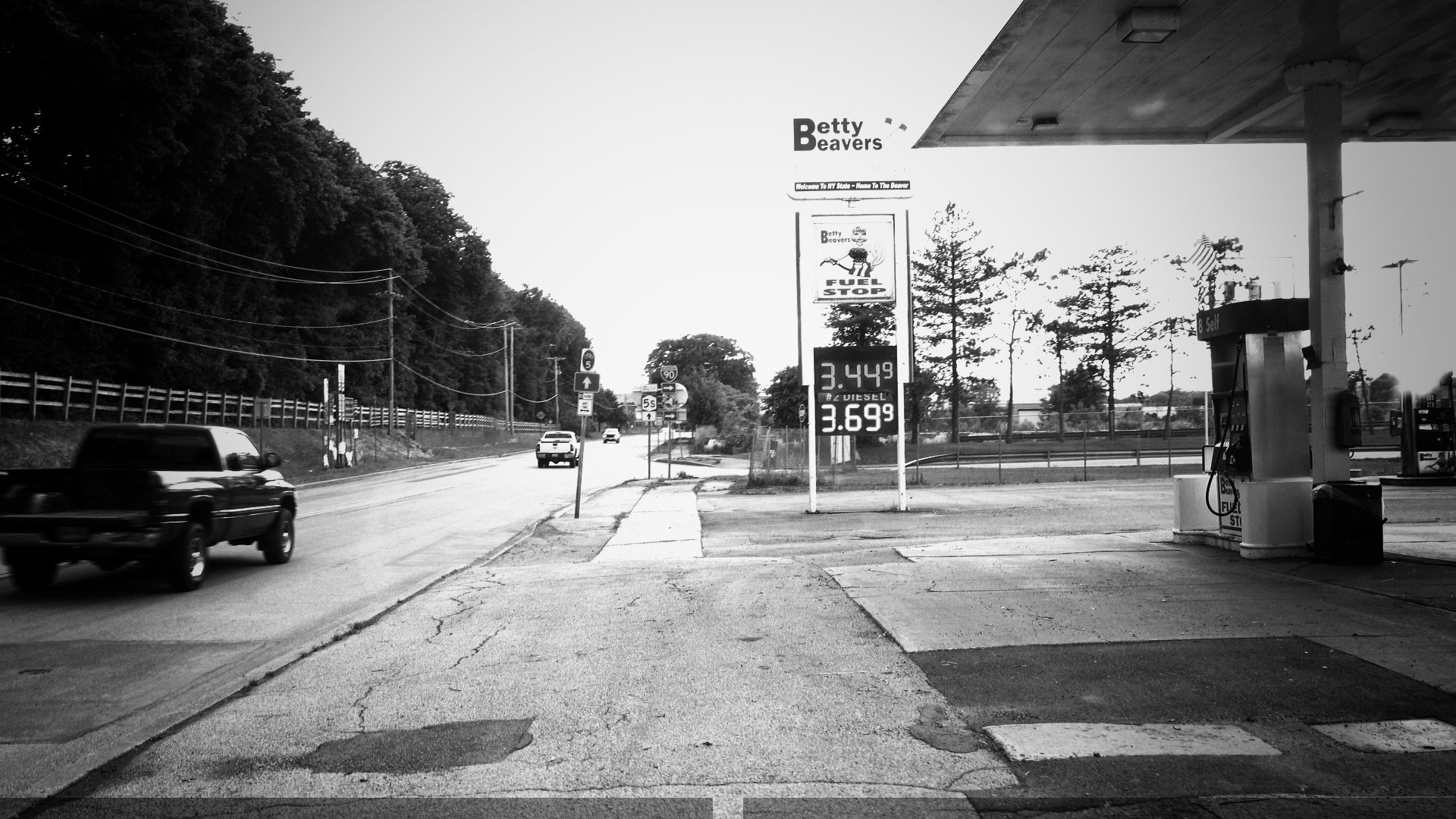
What follows is an article on the camp I have written but was out of the policy of the magazine to publish, so I offer it here for the avid readers. A nice audio-video documentation effort is on the making, will be linked when ready for publication.
The Conduction Camp
radio art from the wave farm to the particle ranch
Have you ever wandered what is to turn sound into art? And how to make art with something that is conceived to be made of sound broadcast in electromagnetic waves?
I just came back from a trip to the rural east of the United States. I was invited by my friend the artist August Black to the Conduction Camp, an encounter of radio artists and producers of radio cultures that was held from 28 of May to the 14th of June in a big house and close to big antennas.
Pictures of the place as a road
This trip touched no major city, if we exclude downtown Baltimore on the last day and during this trip. I have been testimony of many passionate interpretations of sound art vodoo. My role was the one of a active testimony since the commission from August was to help him out by shooting a visual document of the process.
The big house held herself close to some historical barns that we were forbidden to touch, a lovely grass field around, fireplaces, an immense kitchen (for my standards) and a set of rooms apt to create all types of atmosphere for our sessions. In the back a large space for meetings, with abundance of chairs and tables and a view on the fields that bordered the backyard.
The most interesting part of the trip to arrive there was the driving up to the region from Baltimore, a 300 miles drive leaving aside any major city on the way. The distinction between one state and the next being somehow clear from the landscape: Maryland morbid, populated still by active and medium sized farms, Pansylvania rougher, less sofistaicated, with less people, and New York state, wilder, less populated. The houses ornated with american flags, layers of familiar history, stacked in appliances and types of cars left outside, medium lenght of the grass in front. Another difference being the time prior to american elections, the amount of pro or against Trump plates outside the houses, a percentage of the Republican voters just display the flag in a certain way, the Trumpists more vocal in their support for their candidate. In every small town hanging at poles in uniform, photos of "American Heroes" from 100 years of wars abroad.
The overall distribution of people along the road changes as we get close to our destination, less houses, more woods, but with a good amount of clearly displayed No Trespassing Signs.
On the day of arrival, with the van full of gear and one week worth of food to be cooked, we point immediately north to pick up two participants arriving by plane to the Albany International Airport, 50 miles more north. There we pick up Peter Courtemanche from Vancouver and the argentinian composer Virginia Mantinian arriving with her family from Colorado.
Radio Art
Going back to radio art some words to put the non initiated up to speed
[^1]: I am italian, is a tradition of my own culture to give (due) relevance to history.
. It should not be new to anyone the idea that artistic activities can mold the use of any media. Sound and voice being one that is predominant in radio. A third ingredient of radio, that makes it unique, is the act of listening with its sociological and semantics implications. History of radio starts around 1895, with long range application to telegraphy after 1901 when Guglielmo Marconi successfully showed that signal could bounce in the atmosphere from one side of the Atlantic to the next. In 1933 we have the relatively late but explicit appropriation of the concept of radio art by the futurists with the Radio-Art manifesto. If we think that the manifest of futurist Cinema is from 1914 and the Art of Noises is from 1911, we have a generation and a world war in between the events. In 1933 Radio is already a powerful communication and propaganda machine. Pino Masnata and Filippo Tommaso Marinetti anyway went right into it, for example with the futurist radio drama "Construction of Silence" that was preceded by Masnata by solid musical and operistic experiments conceived explicitly for radio
[^1]: The Manifesto is still the oldest explicit definition of Radio Art I have found. It resonates, as an example, in the pages of [Kunstradio.at]()https://kunstradio.at/TEXTS/manifesto.html) were a more concrete definition is given.
Later radio art takes many forms, reality bending plays like Orson Wells "the War of Words" (CBS Radio, 20:00 EST, 1938), or uses the pseudo randomness of the act of listening to radio to write a musical score, like in the famous John Cage piece Radio Music for 8 radios (1956).
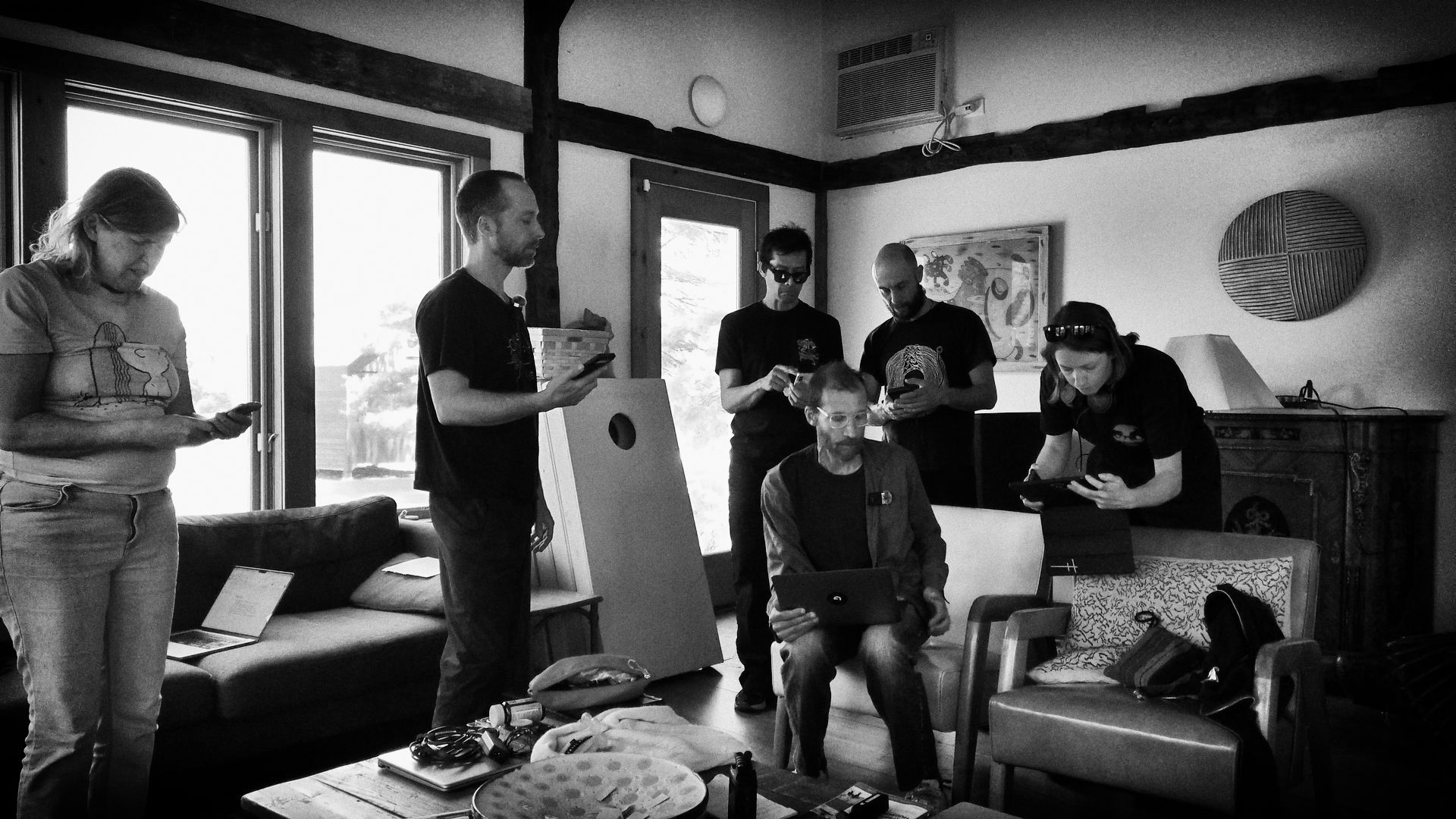
In 2024 what is Radio Art then?
Almost all participants agreed that radio art in 2024 has connections with people listening to each other, and a complex interchange within sound discourse and emotions. This opens up to the fluid and continuous interchange by radio-flow that is broken down in grains and transmitted as numbers, in digital forms worldwide, or radio that is actually broadcast by any mean and can be retrieved somewhere from the frequency spectrum. It seems to be given for granted by the participants that the art they are involved with has some components that can be recording the sounds of nature or machines, transforming invisible phenomenas to sound, through algorithms or physics, orchestrating listening via voice, noise or music, using (or not) narrative tools or a precise semantic. The art is broad and rich of history and I decided that is better to observe them (and to listen) to develop my own idea then to bother them with pedantic requests for a stricter definition. On purpose "what is radio art" is the question I will not pose to them. It will emerge from events and sounds.
The Conduction Series
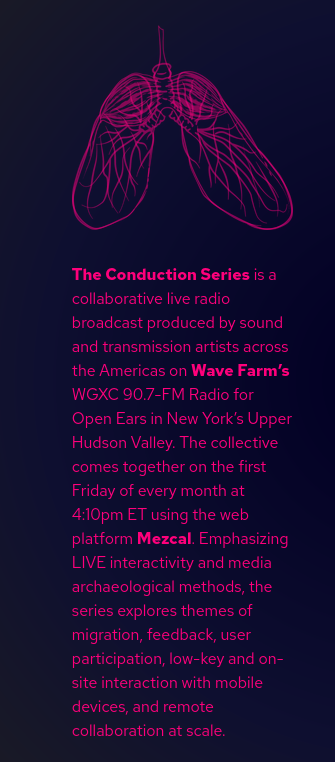
The conduction series, has been the trajectory that took us to the camp. A 3 year long series of performances clustered around a project of August Black, Mezcal. Mezcal is a web browser software that allows multiple actors to "do radio" together via the web. The Wave Farm's WGXC 90.7 FM "Radio for Open Ears" in New York Upper Hudson Valley is hosting the Conduction Series since 2021 every first Friday of the month 16:10 (4:10 PM EAST).

One of the scope of the Camp is to bring together the people involved in the Conduction Series and in the early development of Mezcal, and into this I figure out more like the latter, being involved in the beta test phase some years ago and not a participant to the series.
Radio art is not a thing of the XX century. On this all participants agree. Is still a territory largely to be explored. With this group of 15 people in this house there is a very alive spirit of avant garde, and as I quote the futurists and other bring their own masters, the spirit evoked many times by everybody is the one of the Black Mountain College
[^1]: Founded in 1933, Black Mountain College was one of the leading experimental art schools in America until its closure in 1957. When Philip Johnson, MoMA’s first curator of architecture, learned that Black Mountain College was searching for a professor of art, he suggested Josef Albers, an artist whom he had recently met at the Bauhaus in Germany. Only a few months prior, the Bauhaus had closed its doors due to mounting antagonism from the Nazi Party, and Josef and his wife, the preeminent textile artist Anni Albers, readily accepted the offer to join the Black Mountain College faculty. During their 16-year tenure in North Carolina, the Alberses helped model the college’s interdisciplinary curriculum on that of the Bauhaus, attracting such notable students and teachers as R. Buckminster Fuller, Elaine and Willem de Kooning, John Cage, and Robert Rauschenberg [Wikipedia].
and consequently of the Bauhaus.
Considering the tenure of actual cultural politics in Europe - as the New European Bauhaus is the name of the European initiative that connects the European Green Deal to her cultural politics - the group could not been more spot on. And in the USA involved as they are in the actual presidential campaign, this sounds as well out of tune with the current perception of socio-political affairs that emerges in the random conversations of this group of artists. And with the essence of the question, pressant in the academic life of some of the perticipnts: "how do we learn, what is teaching, why those questions are still vital"
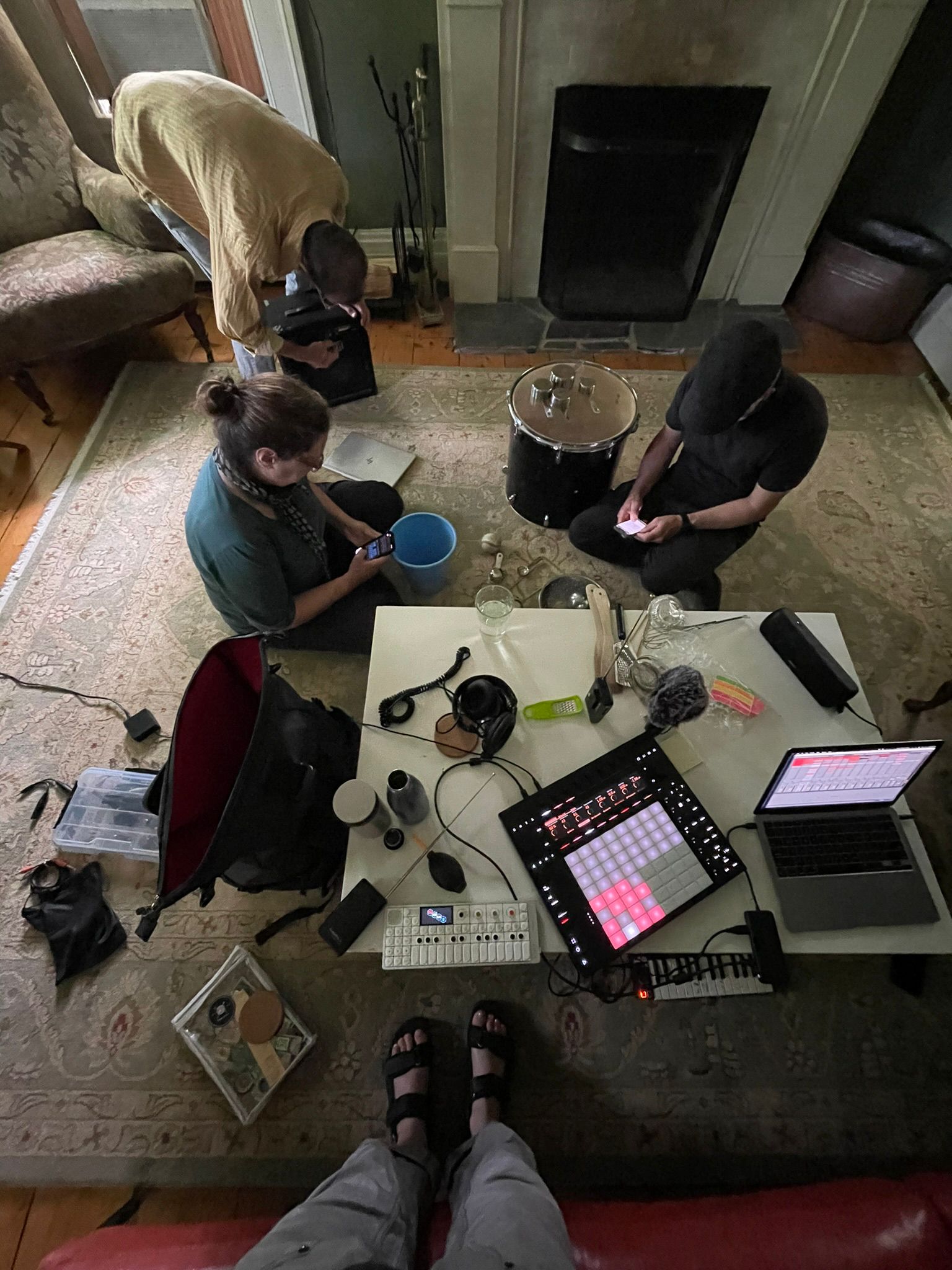
Mezcal
Mezcal as an instrument that represents a way of making art that I as well consider appropriate to hint to answers.
There are participants that gather online from any type of situation into a shared sonic room with high quality audio and no audible asynchrony or lag. Everyone has access to this space with the full auditory spectrum and control on their volume. When you do this using headphones you really enter a shared hybrid space were your attention travels into the sound. From the interface you have access to media across the Internet and from your hard drive. You can talk and build conversation if you like to use it for talks on the radio, and shape something together. If you want you play with sounds or instruments. You can record the room and broadcast it to your own server radio. Under the hood there is the cutting edge use of the possibilities of the browser to shape interaction in the sonic realm. You hook this to the radio and you have a radio station produced on line. But there are so many other possibilities of use to explore. See this video here if you are interested in a tutorial.
Radio Camp Highlights
My personal highlights of the week of the camp are outside the mixture of conversations with the participants, mostly recorded on video for the documentary, and dotted by feeling of intellectual exhaustion. And healthy laughter. Being in the flow of sounds, the technicalities of broadcast and syndication, the languages and the personalities, the discussions about politics, arts, software development and existentialism, and the joy of the infants in playing the whole day together.
Cooking while discussing art with Elisabeth Zimmerman from Kunstradio in Vienna, talking cinema and light used as sound with Jeff Economy and Live Coding with Peter Courtemanche and August, flying a drone up to a nearby antenna with Max Goldfarb, conspiring with Florencia Curci, Alejandro and Rodrigo to construct a relay network to syndicate each other radios content... And more, being absolutely delighted by the fast witty smarness of Anna Fiz when I joined the workshop on inventing radio (and sound) games and the knowledge of Betsy.
Monday morning we traveled early to a cafe in Catskill, a small town nearby. We were to see the live group of electronic and acoustic local musicians improvising, "Music for Furniture" (that's the name of the project not the Satie score). The situation was dadaistic without the bombastic, maybe a wanted effect due to the slow tone of monday morning spirits and the character of the land. Estatic results. Simply put an audience of willingly passers by having coffee and reading the news, while against a window open on a deep landscape five musicians shaped the air as a sculpture of waves. Rodrigo from radio Tsonami live broadcasting and recording as Jimmy was in the middle of the band playing.
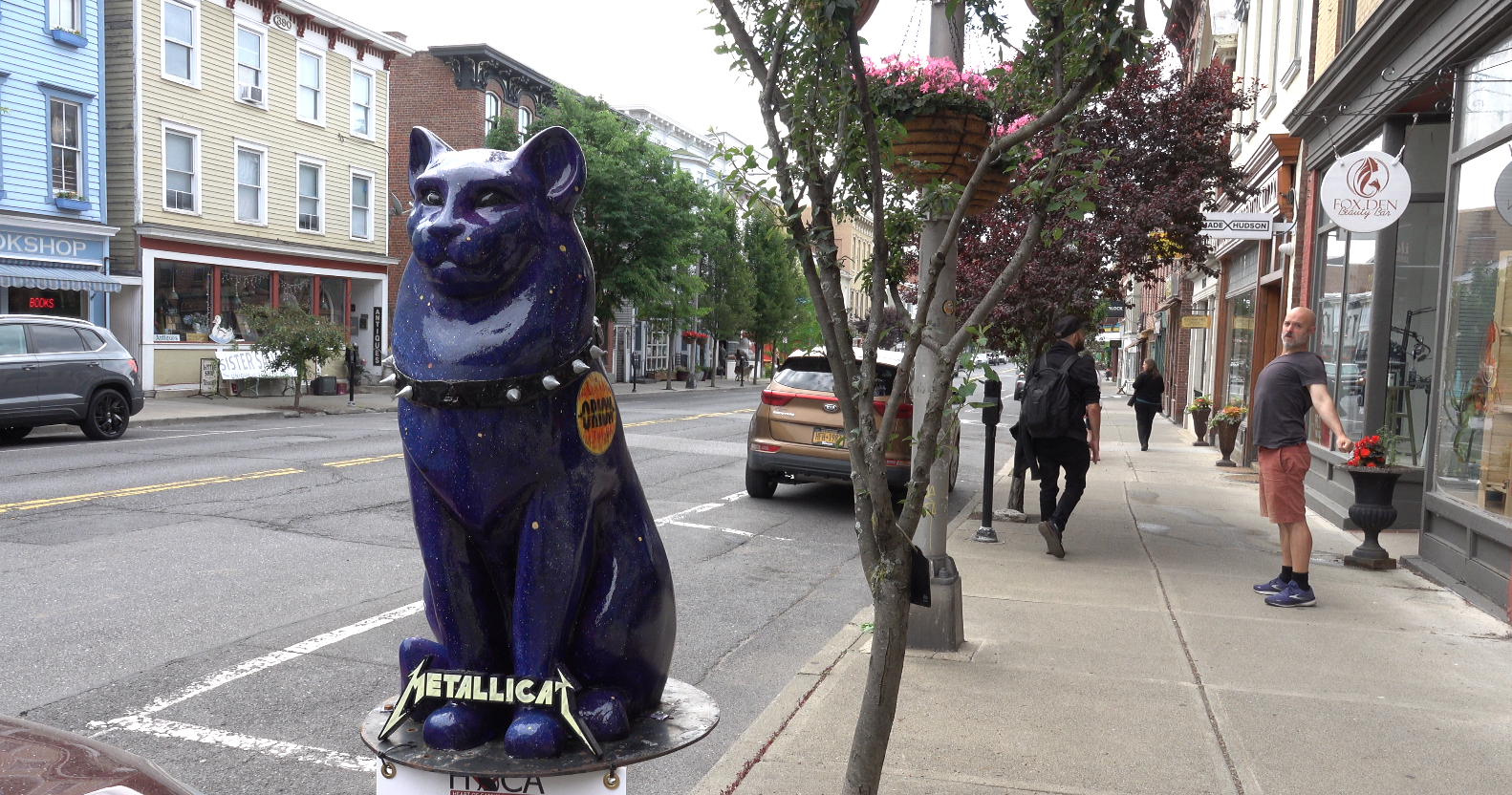
One evening Jimmy Garver, the furniture musician himself, in his role of participant to the workshop, invited us at his home in Catskill for dinner and chats. Catskill area has a place to swim in the river walking distance from his house and I could observe the crowd. Mostly students, mostly fit, in their teen and 20'es and of all colors. Again the differences in people ways and movements depicts a society on the edge between eras. The feeling kicks in together with my European worries and prejudices not able to describe what I witness -and find hard to name- around myself. Again a healthy case of cognitive dissonance.
In the house time flies. The Conduction group exchanges, experiments and plays under the guidance of August. Florencia Curci, anima and director of Radio Caso the radio of "Centro de Arte Sonoro" in Buenos Aires. As in the case of most of the people gathered here Radio Caso is a radio that broadcasts art. They promoting live experimentation and seem to have a radio situationist approach. But what kind of experiments? Florencia and Virginia have set on the table all kind of sounding objects and contact mikes. The sound o the way they touch them changes within their setup made of code and electronics. Time and pressure of air, his is sound after all, gets sculpted in mathematical wondrous layers of complexity and beauty. Aside Lucio, the 16 months son of Virginia, plays happily adding giggles and sounds to the mix.

One interesting part of radio is in the importance of scavenging archives. The sound of a rocket sent to space re entering the earth atmosphere, the chants of whales, but as well concrete poets, the noises of a side street, the sound of trees, the voice of Lenin or Mayakovsky from a wax cilinder kept in a museum. All this has been digitalized and put somewhere and can be used in your own auditory trip acting on your imagination. And it moves stories, a mix of oral culture and invention, that evokes when shared on a open end radio wave. From a pulsar star to the sound of the sun, from a electric motor malfunctioning to our wifi. The Art of Noises envisioned by Luigi Russolo is after all a spectrum of pleasures tempested by gems once you train your ears and set the level of the volume to your pleasurable standards (in some cases to zero). Setting your own volume is at the essence of Radio Art situationist landscape.
Another Final performance
The night of the final performance in the Conduction Camp, every corner of house was bubbling with people in their headphones, collectively shaping the radio flow. The toddler and myself -probably the two aliens from the closet- wandering around from space to space, from hydrophones submerged in the bubbling hot tub outside, to tables full of out of context kitchen sounding instruments and electronics.
But the enlightening moment was when August and Anna came back from the wavefarm radio where they were interviewed to the house that night. Their eyes were shining. "we listened to you guys in the car, was fantastic, all this it made soo much sense".
SOUND: "CAMP CODA" a performance on WGXC 92.1 FM and online June 6 2024 https://assets.august.black/conduction_series/recordings/2024_06_07-camp_coda.flac
Anna Friz conductor (Greenville, NY), August Black (Greenville, NY), Betsey Biggs (Greenville, NY), Florencia Curci (Greenville, NY), Jeff Economy (Greenville, NY), Jimmy Garver (Greenville, NY), Maximilian Goldfarb (Greenville, NY), Peter Courtemanche (Greenville, NY), Rodrigo Ríos Zunino (Greenville, NY), Virginia Mantinian (Greenville, NY)
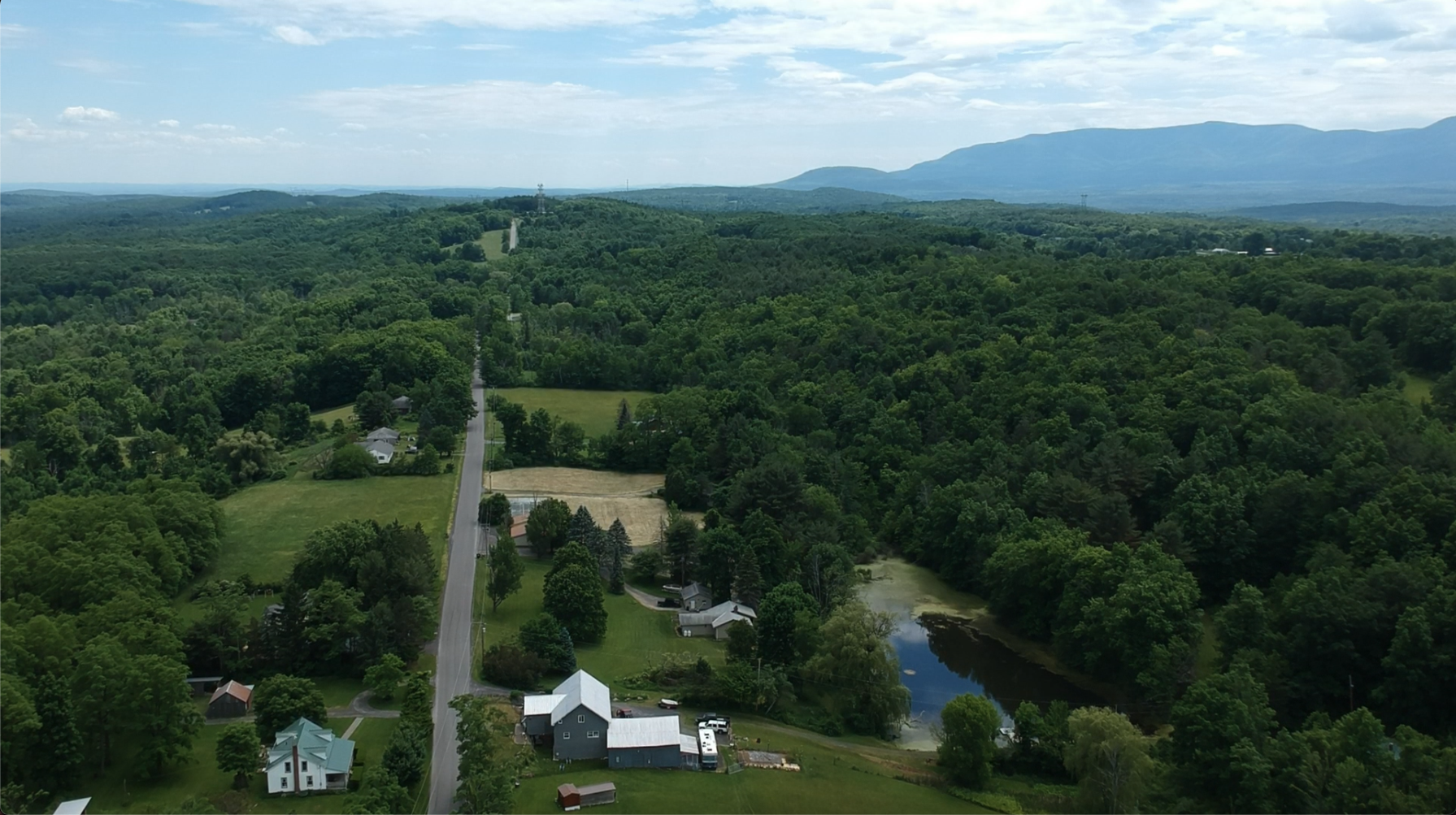
The Wave Farm and the Particle Ranch
Waves and Particles. The other side of a wave, and is powerful as well. In the electromagnetic spectrum, governed by Maxwell Laws, bouncing in the atmosphere or coming from far away, all energy seems to move in waves and so can be transformed into sound. And to all energy we can associate matter that granulates in finite ways. And finite sampling, compression algorithms, digital granulation and synthesis are real and very accessible. But software is not only mathematics. Is people.
After the camp, taking chance of the remaining days August loaded Alejo, Rodrigo and myself on the van on a trip to a fishing lodge in Canada. An extra 4 days of rest, nature, mumbling and distance driving were a lot of latin was spoken.
Last day in Canada August came up laughing with the socialist rustic version of the wavefarm: he called it "TheParticle Ranch: as the wavefarm yet everything is one dollar cheaper". We laughed at the joke, knowing that hints to an undeniable small truth about us, misfits, or "mislukte" as my true friend and composer Hansko Visser says. Feeling like gypsies errand border to border in a realm made of high ideals, low resources, hard and unpaid work and spiritual siestas. There is a little truth? Are we hopeful monsters of a new age that might never come?.
A certain distrust in titles and a strong profound wish to find allies everywhere, as a strategy to survive but moreover as a way to secure always a sympathetic audience to tell our stories and our inventions. In the dark space between the headphone and the screen we are believers of Elizabeth's adagio that "no matter how strange your broadcast, there is always a listener out there".
Most of the fishes we have caught went back into the lake.
PS: the 19th of September on O1 Radio, Austria was broadcasted Elizabeth Zimmermann super radio program about the Conduction Camp. https://oe1.orf.at/programm/20240919/769467/Radiokunst-ueber-Grenzen-hinweg check it out!